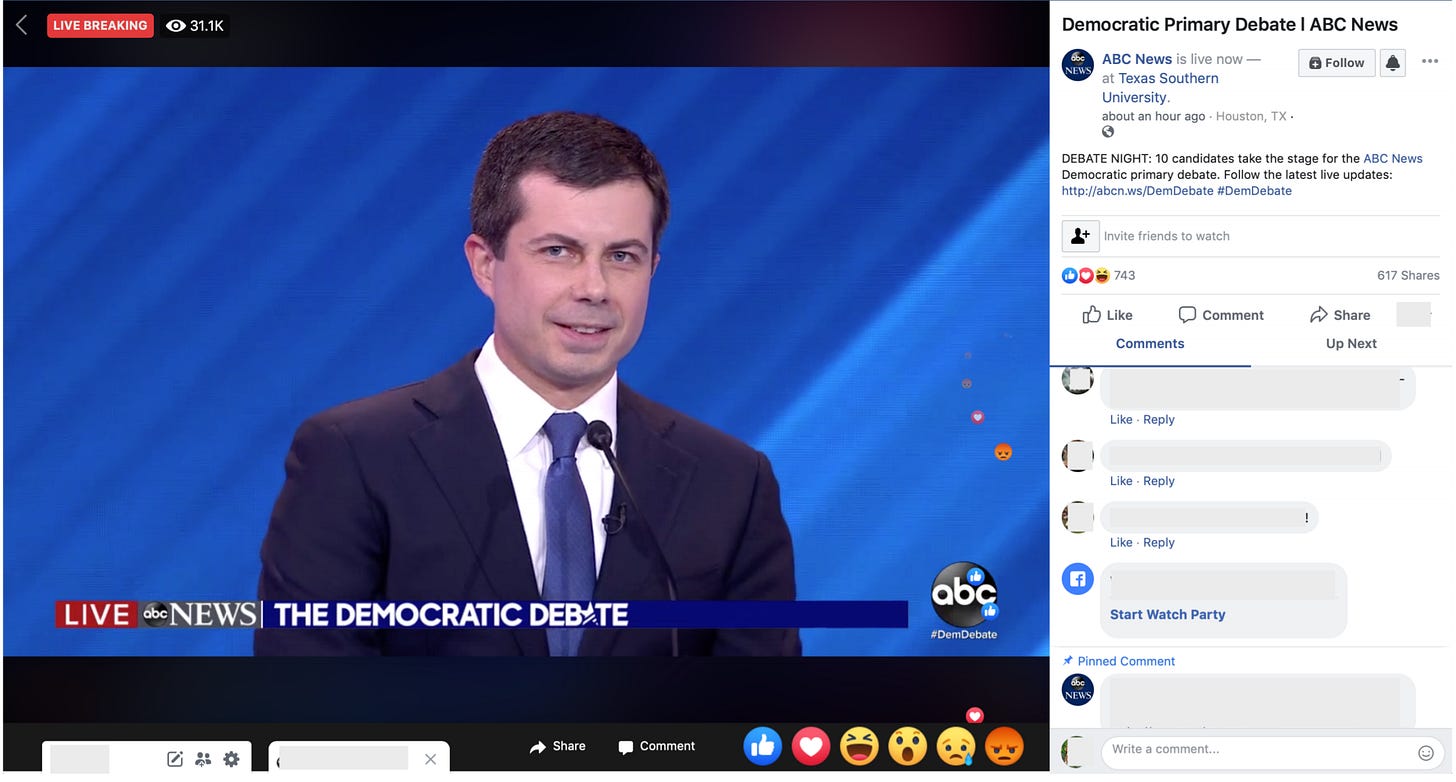Cacophony, not conformity
Re-theorizing the dreaded Echo Chamber
“Echo Chambers” are one of the most well-studied topics in online media.
The empirical evidence is clear: online Echo Chambers aren’t real, except for a minority of people in specialized networks. Of course, this conclusion relies on a certain definition of “Echo Chamber”:
it can’t just be >50% congruent information, and it also can’t just be 100% congruent information. I think the best definition is the offline baseline: online echo chambers exist if the online news consumers get a higher percentage of their news from congruent sources than do offline news consumers
Sinan Aral has a thoughtful Twitter thread about another definition of Echo Chambers, one which focuses on the changes in media diet bias produced by specific technologies rather than its absolute level.
Either definition of “Echo Chamber” misses the point of what makes the term so sticky and evocative. The term can be analytically confusing, which is perhaps why it is taken up in so many different contexts. We’re not worried about “Online Biased Media Diets”. So let’s unpack the metaphor and figure out why it’s so … resonant 😎.
Close your eyes and imagine a meatspace echo chamber, with other people inside. There is a cacophony of voices; they’re distorted, and you can only pick out decontextualized snippets of conversation; you don’t understand the acoustical properties that determine which voices you hear; it can sound like there are a whole host of voices even if there are only a few other speakers; and yes, if you talk, you will hear your own voice reflected back at you.
The above discussion only considers this last aspect of Echo Chambers (and even that doesn’t reflect the analytic definitions most commonly used; we don’t usually require people to actually be posting about politics to be concerned about their media diets). Social media sounds like a pretty good fit for several other aspects, which I think is why the metaphor is so successful.
I want to drill down on issues about estimating the size and distribution of the other people in the Echo Chamber with you. I’ve theorized some of these parallels in a recent working paper (with Victoria Asbury, Keng-Chi Chang, Katherine McCabe, and Tiago Ventura) that describes a field experiment where we randomly assigned some subjects to watch the October Democratic Primary debate on standard broadcast; or on the 538 “Expert Chat” stream; or on Facebook’s “streaming chat” stream.

The latter is an Echo Chamber…for all viewers, regardless of their political leanings. One reason is that there are dozens of comments streaming down the chat window per minute.

Some of our hypotheses relate to the concern the inferences that subjects in the Echo Chamber will make about the public. These messages represent “social cues...[which] provide direct evidence of social opinion, which people take to be representative of public opinion, even if they are not" (p313).
This last claim references Lerman et al 2016, who demonstrate the existence of the “majority illusion" that can be produced by social networks: the combination of even slightly skewed networks and differential attention to voices that you can pick out of the din of the Echo Chamber give people the impression that they are in the majority.
Social media is much “denser" than either traditional media or socialization; the consumer is able to observe a large number of signals in a very short period of time. The issue is that our intuitions about the informational content of each signal are misleading because the signals are highly correlated with one another. (This only amplifies the effect of the cratering cost of sending signals I described earlier). Although this effect should not change the direction in which a social media updates one's beliefs about the world, it does tend to magnify any belief updating, resulting in what Ortoleva and Snowberg 2015 describe as overconfidence, which in turn causes ideological extremeness.
So: social media might well be an Echo Chamber—and one that produces both “confidence polarization” and regular old partisan polarization—at many different levels of biased media diets.
Another conceptualization of the Echo Chamber involves the literal repetition of a given message. This occurred in the streaming chat experiment; the speed of the stream makes it impossible to type out long messages, so many commenters resort to the old internet tradition of “copypasta”: a 30- to 50-word text snippet that they spam ad nauseum.
AMERICANS ARE ABOUT TO FIND OUT THE TRUTH ABOUT BERNIE SANDER’S SOCIALIST AGENDA…STALIN IS SMILING FROM BEYOND THE GRAVE…GUT DOCTORS BEG YOU TO THROW OUT THIS VEGETABLE TO DEFEAT SOCIALISM FOR GOOD.
One person repeatedly posting this message can make it harder to hear the rest of the voices.
Or consider the Greek myth of Echo, the mountain nymph. Per Ovid, Zeus was up to his old skirt-chasing tricks and Hera wanted to put an end to it. Echo was tasked with distracting Hera with conversation whenever she was close to catching on: “Echo knowingly held her in long conversations, while the nymphs fled.”
Echo represents the management of attention for the purposes of protecting the powerful, then we can see why social media is in fact an Echo Chamber. Maybe that’s a reach, but the density of associations accreted to Greek myths may explain more about the popularity of the “Echo Chamber” than any narrow definition can contain.
